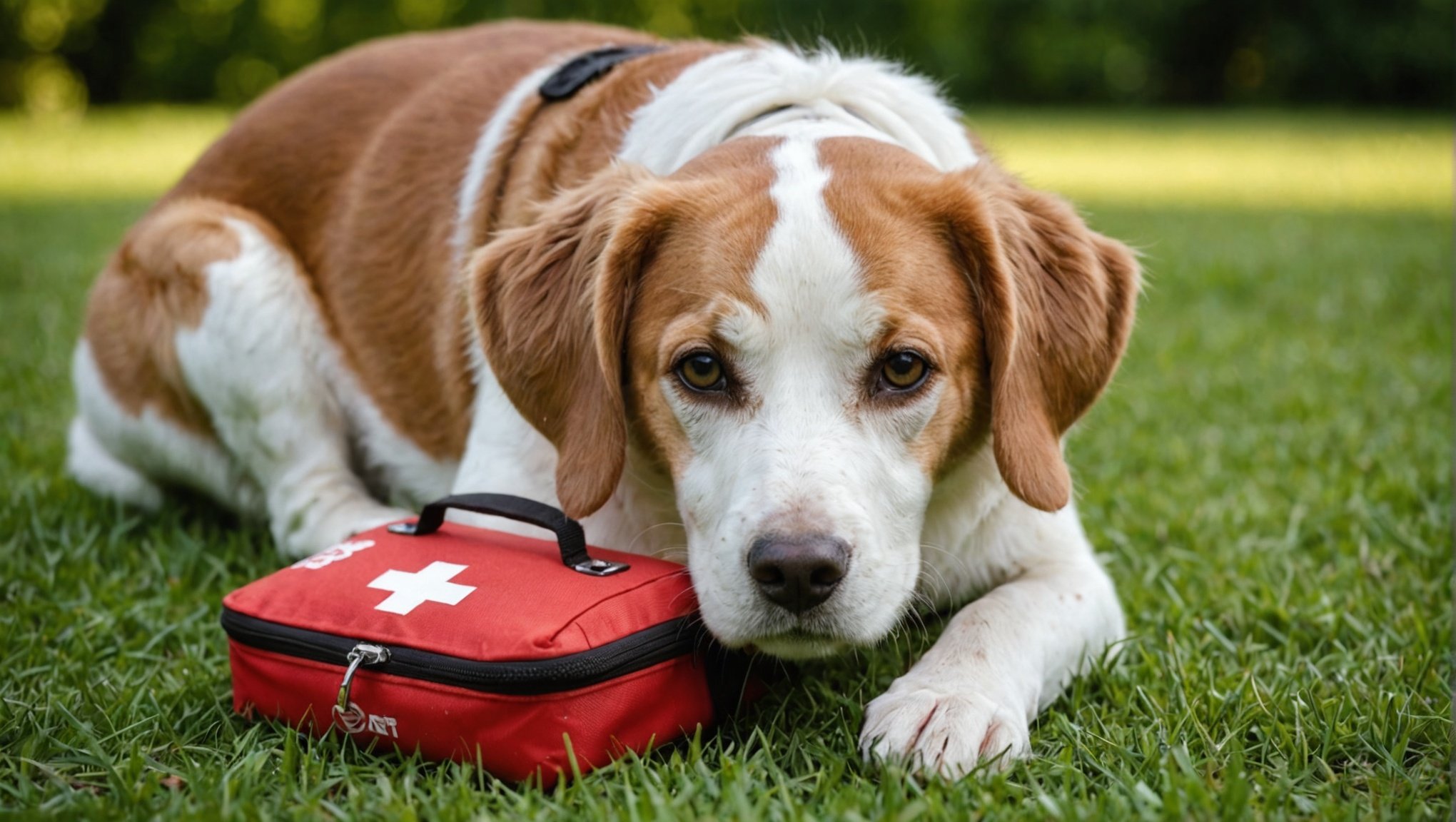Top Essential First Aid Tips Every Pet Owner Should Know!
As a pet owner, there’s nothing more heartbreaking than seeing your furry friend in distress. Whether it’s a sudden injury, a poisoning, or a choking incident, knowing the right first aid tips can be the difference between life and death. Here’s a comprehensive guide to help you prepare and respond to emergency situations with your pet.
Creating a Pet First Aid Kit
Before we dive into the specific first aid techniques, it’s crucial to have a well-stocked pet first aid kit. This kit is your first line of defense in any emergency situation and can make a significant difference in the outcome.
This might interest you : Effective Strategies to Alleviate Separation Anxiety in Newly Adopted Pets
Essential Items for Your Pet First Aid Kit
Here are some of the key items you should include in your pet first aid kit, as recommended by veterinary experts[3].
- Hydrogen peroxide 3%: For inducing vomiting, but only under veterinary advice.
- Oral dosing syringe or turkey baster: For administering hydrogen peroxide or other medications.
- Teaspoon/tablespoon set: To measure the correct dosage.
- Activated charcoal: To help absorb toxins in case of poisoning.
- Digital “fever” thermometer: To check your pet’s temperature.
- Liquid hand dish washing detergent: Such as Dawn or Palmolive, for cleaning wounds.
- Rubber gloves: To protect yourself from bodily fluids.
- Triple antibiotic ointment: For wound care, but not for cats.
- Vitamin E oil: For skin care.
- Diphenhydramine tablets 25mg: For allergic reactions, but only under veterinary advice.
- Ophthalmic saline solution or artificial tears: For eye care.
- Sweet electrolyte-containing beverage: To help with dehydration.
- Karo syrup: For hypoglycemia.
- Bandage material: Gauze, non-stick bandages, and tape.
- Scissors: For cutting bandages.
- Soft muzzle: To prevent biting.
- Sterile dressing: For wound care.
- Diluted betadine solution: For disinfecting wounds.
- Leash: For safe transport.
- Tweezers: For removing splinters or ticks.
- Splint material: For stabilizing fractures.
Handling Emergency Situations
Staying Calm and Restraining the Pet
In any emergency situation, the first step is to stay calm and ensure both your safety and your pet’s. Your pet is likely to be frightened and may bite or try to escape, so it’s essential to restrain them properly.
In parallel : Recognizing Overexertion in Dogs: Key Signs to Watch for During Training Sessions
“Your pet is likely to be confused and frightened, which can lead to bites or escape without proper restraint,” advises the Veterinary Emergency Group[5].
- Use a muzzle if your pet attempts to bite.
- Lay your pet on a large blanket or towel, or place them in a pet carrier for easier transport.
- This type of restraint helps in moving your pet to the car for a trip to the emergency vet.
Checking Your Pet’s Airway
Ensuring your pet can breathe is critical. Here’s how you can check and clear their airway:
- Insert your fingers into the pet’s mouth to remove any objects or substances obstructing their breathing.
- If you cannot remove the objects or if you suspect your dog will bite you, get to the emergency vet immediately.
- Place the palm of your hand on the left side of your pet’s chest to check for a heartbeat.
- Elevate the bottom half of the body to help encourage blood flow to the brain during a crisis[5].
Managing Choking Situations
Choking is a common emergency that can arise suddenly, especially if your pet likes to chew on small objects.
Steps to Follow in a Choking Situation
- Hold the pet upside down and thrust against the chest five times to try to remove any objects causing an airway obstruction.
- Continue providing rescue breathing at a rate of 10 breaths per minute.
- If the object is visible, you can try to remove it gently with your fingers, but be cautious not to push it further into the airway[5].
Recognizing and Treating Poisoning
Poisoning is a serious and potentially life-threatening emergency. Here’s what you need to know:
Immediate Actions
- If you suspect your pet has been poisoned, contact your vet or a veterinary poison hotline immediately. The Pet Poison Helpline is a valuable resource in such situations[3].
- Never administer anything without consulting a vet first. Home remedies like milk, peanut butter, vegetable oil, or salt are not only ineffective but can also be harmful.
- If advised, use hydrogen peroxide to induce vomiting, but only under strict veterinary guidance.
Common Poisons
Here are some common poisons that pets might encounter:
| Poison | Symptoms |
|---|---|
| Chocolate | Vomiting, diarrhea, increased heart rate, seizures |
| Antifreeze | Vomiting, lethargy, seizures, kidney failure |
| Medications | Vomiting, diarrhea, lethargy, seizures |
| Plants (e.g., lilies) | Vomiting, lethargy, kidney failure |
| Cleaning Supplies | Vomiting, diarrhea, difficulty breathing |
Performing CPR on Dogs and Cats
Cardiopulmonary resuscitation (CPR) is a critical skill that can save your pet’s life in an emergency situation.
Steps to Perform CPR
- Place the pet on their right side and check for a pulse in the groin area or feel for a heartbeat in the chest.
- For brachycephalic dogs (smush-faced breeds), place them directly on their back.
- Position your hands over the middle of the chest and compress about 100-120 times per minute.
- Be aware that CPR on pets can sometimes result in broken ribs, just like in humans[5].
Treating Blood Loss Quickly
Bleeding can be a severe emergency, and prompt action is necessary to save your pet.
Immediate Steps
- Use a piece of clothing, a towel, or a bandage to create a dressing and press firmly on the injury to stop the bleeding.
- If the blood loss is from a toenail that has been cut to the quick, use styptic powder to stop the bleeding. However, any other type of injury should be assessed by a veterinarian immediately[5].
Recognizing Heatstroke
Heatstroke is a common summer emergency that can be fatal if not treated promptly.
Symptoms of Heatstroke
- Excessive panting
- Drooling
- Bright red gums
- Collapse
- Seizures
Immediate Actions
- Move your pet to a cool, shaded area immediately.
- Use cool water to lower their body temperature, but avoid using ice or ice water.
- Provide cool water to drink if your pet is conscious.
- Contact your vet or an emergency vet immediately[2].
Practical Advice and Additional Tips
Contacting Your Vet
In any emergency situation, it is crucial to contact your vet or an emergency vet as soon as possible. Here’s why:
“Always call us first before coming so that our veterinarians can advise you on what to do at home and so that our staff and doctor can prepare for your arrival,” advises the Long Beach Animal Hospital[3].
Basic First Aid Knowledge
Every pet owner should have basic first aid knowledge. Here are some key tips:
- Stay calm: Panicking can lead to poor decision-making.
- Restrain safely: Use a muzzle or a blanket to restrain your pet without causing harm.
- Check vital signs: Ensure your pet is breathing and has a heartbeat.
- Seek help immediately: Don’t delay in contacting a vet or emergency services.
Regular Check-Ups
Regular veterinary check-ups are essential for maintaining your pet’s health and catching any potential issues early.
“Regular check-ups with your vet can help prevent emergencies and ensure your pet stays healthy,” says a veterinary expert.
Being prepared and knowing the right first aid tips can make a significant difference in the life of your pet. From creating a comprehensive first aid kit to recognizing and treating common emergencies, every pet owner should be equipped with this knowledge.
As a pet parent, it’s your responsibility to ensure your furry friend receives the best care possible. By following these tips and staying informed, you can help your pet live a longer, healthier life.
Remember, in any emergency situation, staying calm, acting quickly, and seeking veterinary care immediately are the keys to saving your pet’s life. Always keep the contact information of your vet and a veterinary poison hotline handy, and never hesitate to seek help when you need it. Your pet’s life depends on it.











